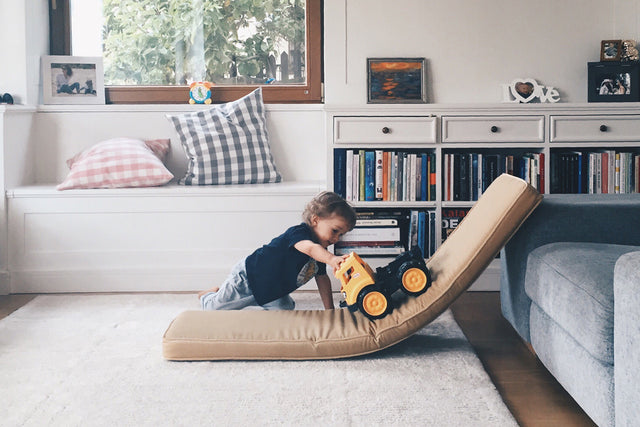How to Encourage Independent Toddler Play

Toddlers are crazy about their parents…in your toddler’s eyes, you’re the coolest person who has ever walked the planet. That’s why, when it comes time to play, they clamor for your attention like fans at their favorite rock-star’s show. You are the ultimate playmate!
As flattering as that may be, learning to play alone helps toddlers grow into independent little humans. Not to mention, sometimes you need a little break from play…after all, a happily playing toddler gives you a chance to fold laundry or whip up lunch. So, how do you begin to encourage your toddler’s independent play?
Teach Independent Toddler Play With Patience Stretching
To get your toddler used to playing independently, try this twist on patience stretching. Patience stretching is a method I use to help teach toddlers to wait patiently and control their impulses…it’s also the basis for one of my favorite sleep-training techniques, Twinkle Interruptus, for kids who just don’t want to go to bed. With this method you would gradually stretch your child’s ability to wait…or in this case, play independently.
Here’s how to use patience stretching to teach independent play: When your child asks you to play with them, start playing as usual. Then, mid-play, say “Oh! Mommy forgot something, I’ll be right back.” And, turn away while you pretend to do something for 5 seconds. Next, turn back and immediately give your child praise, saying “Wow, wonderful waiting!”
Little by little, stretch the waiting time more and more (10 seconds to 30 seconds to 60 seconds, and so on). If you practice this frequently, your little one will get used to playing without you.
Set a Timer to Teach Independent Toddler Play
Another approach: Use a timer. During a calm play period, show your toddler how the timer works (“When Mr. Dinger Dings, Mommy comes back fast, and while you wait for Mommy to come back, you can have so much fun playing!”) When the timer rings, come back right away, and give your child praise. Gradually, increase the waiting period.
Resist the Urge to Interrupt Independent Toddler Play
And, along with training your toddler, you may need to work on training…yourself! When you see your toddler struggling, playing with something the “wrong way,” ignoring a toy you think they’d really like, or making a mess, you may find yourself tempted to insert yourself. Try to fight that instinct! The more you jump in, the harder it will be for them to get used to playing independently. They might come to expect—or rely on—Mom or Dad to swoop in.
While learning to play independently is a gradual process, it’s a valuable skill for toddlers to master…and it can be helpful for parents too. Because as your tot learns to tinker solo…you can tackle more and more of your to-do list!